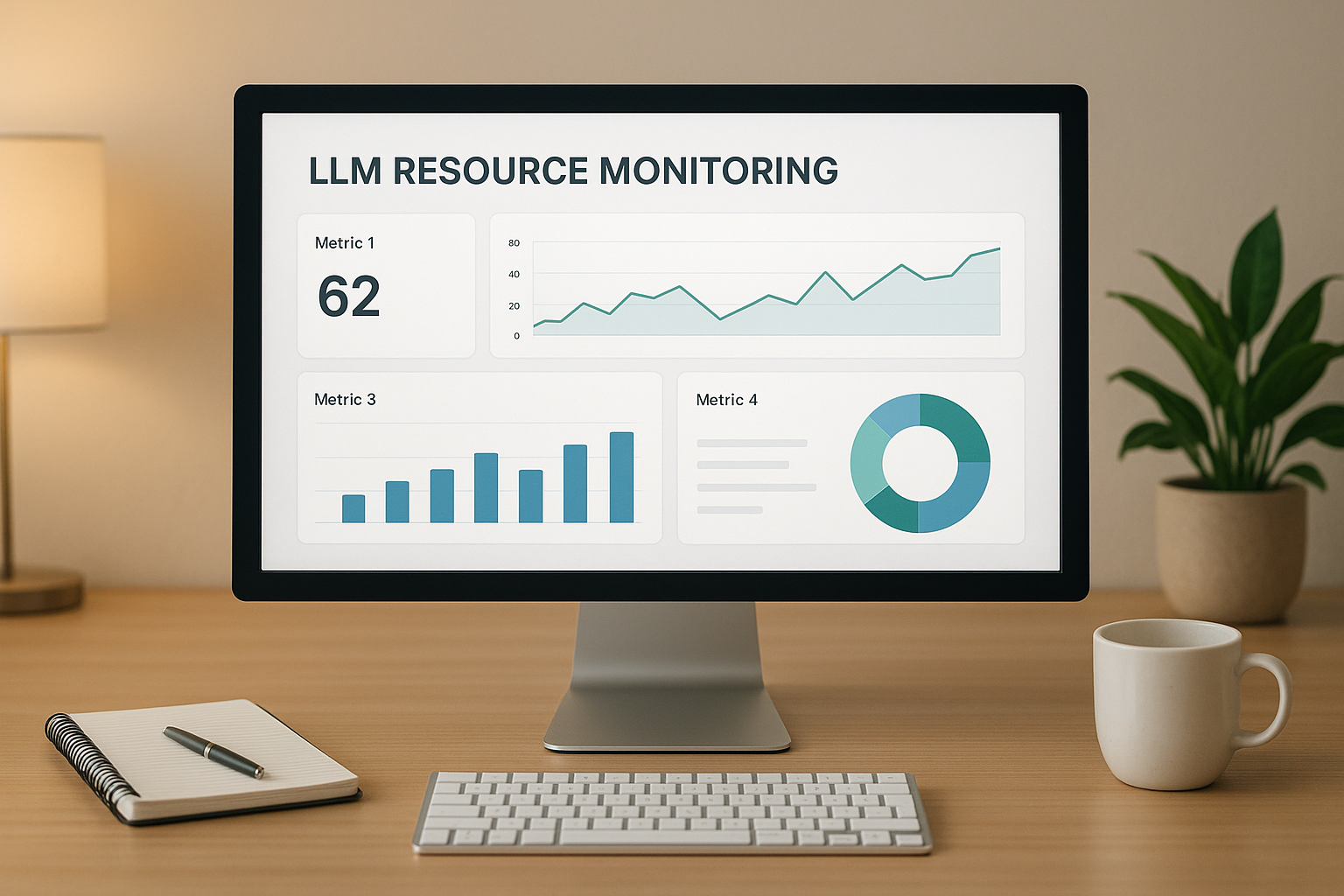
AI bias can lead to unfair outcomes - impacting trust and system integrity. Adding bias detection to your AI pipeline ensures decisions are equitable across all groups. Here’s how you can do it:
Detecting bias effectively starts with careful planning. The steps you take here will shape how well you can identify and address unfair outcomes at every stage of your AI pipeline.
To tackle bias detection, you need to establish clear objectives tailored to your specific use case. For example, the fairness considerations for a hiring algorithm will differ from those of a loan approval system.
Keep in mind that domain-specific details matter. For example, geographic location might be critical for insurance models, while educational background could be key for hiring systems. Document your standards so you have a consistent guide for bias detection. Trying to optimize for multiple fairness definitions at once is rarely practical.
Your system needs to be ready to handle the demands of bias detection, from computational requirements to secure management of sensitive data.
Data preparation is a crucial step - overlooking this can lead to missed biases or false alarms.
Once your data is prepared, you’ll be ready to integrate bias detection into the core phases of your AI pipeline.
With your environment set up, the next step is embedding bias detection throughout every stage of your AI pipeline. This proactive approach helps catch potential problems early and ensures fairness remains a priority throughout your model's lifecycle.
Bias often begins at the data stage, making this your first opportunity to address it. Start by examining demographic representation in your dataset. If certain groups are underrepresented, it can hinder your ability to identify meaningful bias patterns.
Take a close look at how your data is collected. Sampling bias is a common issue - historical datasets may reflect outdated or discriminatory practices, and convenience sampling can unintentionally exclude specific communities. For instance, building a credit scoring model using data from only a small segment of customers could miss important insights about underbanked populations.
During preprocessing, perform statistical parity checks to analyze how sensitive attributes like race, gender, or age relate to your target variable. Document these findings to establish a baseline for later comparisons after applying bias mitigation strategies. Additionally, use stratified sampling to preserve realistic group ratios without artificially skewing the data.
Once you've implemented bias checks at the data level, you're ready to carry these evaluations into the model training phase.
In the training phase, periodically assess bias after key iterations to prevent fairness issues from becoming embedded in your final model. Evaluate fairness metrics across protected groups based on your established standards.
Automate bias analyses, especially when you notice significant performance shifts. For example, if one group consistently experiences lower positive prediction rates, apply targeted mitigation methods such as re-weighting training samples or adjusting predictions post-training for better calibration.
Don’t stop at single-attribute assessments - test for intersectional bias by examining combinations of attributes like age and gender or race and income level. These analyses often uncover more complex or compounded biases that may not be obvious otherwise.
With these measures in place, the final step is to ensure ongoing bias monitoring once the model is in production.
Bias detection isn't a one-time task - it requires continuous monitoring during production. Implement real-time tracking to compare prediction outcomes across demographic groups, and set alerts for deviations in impact ratios that fall outside acceptable ranges.
Watch for data drift indicators that signal when production data starts to differ from the training data. Shifts in demographic composition, feature distributions, or attribute correlations can introduce new biases. Regular statistical tests can help you identify and address these changes.
Establish feedback loops to capture real-world outcomes and compare them with your model's predictions. Regular audits are essential for spotting long-term trends and assessing cumulative effects that might go unnoticed in daily monitoring.
Finally, create a clear plan for handling situations where bias indicators exceed acceptable thresholds. Define roles and responsibilities for quick response, and consider implementing automated rollback options for critical applications to minimize harm.
Picking the right metrics is a key step in detecting and addressing bias in AI systems. Since different applications have different needs, selecting the right measures - and setting appropriate thresholds - can help ensure fair outcomes.
Statistical parity checks whether different groups receive positive outcomes at similar rates. You can calculate this by comparing the percentage of positive predictions across groups. For example, if Group A has a 60% positive prediction rate while Group B has 40%, this would signal a potential issue.
Disparate impact focuses on whether one group faces significantly lower positive outcomes compared to others. The "80% rule" is often used here: if a protected group's selection rate drops below 80% of the highest group's rate, it may indicate bias. For instance, if Group A has a 50% approval rate and Group B has 35%, the ratio is 70%, which would fall short of this standard.
Equalized odds ensures that true positive and false positive rates are consistent across groups. This metric is especially important in fields like criminal justice, healthcare, and fraud detection, where both fairness and accuracy carry significant weight. The goal is to maintain similar rates of true positives and false positives across all groups.
Calibration evaluates whether predicted probabilities match actual outcomes equally for all groups. For example, if your model predicts a 70% chance of loan default, about 70% of cases should actually default - regardless of the demographic group. Poor calibration can lead to systematic over- or under-estimations of risk.
Individual fairness ensures that similar individuals are treated similarly, regardless of group membership. This requires defining a similarity metric based on relevant characteristics while excluding protected attributes. For example, two loan applicants with identical credit scores, income levels, and debt-to-income ratios should receive comparable risk assessments.
It's important to note that optimizing for all these metrics simultaneously is usually not possible. Trade-offs are inevitable, so prioritize metrics based on your application and any applicable regulations.
Once you've selected your metrics, the next step is to establish clear thresholds to monitor and enforce fairness.
Defining thresholds is about balancing fairness with practical constraints. Start by analyzing historical data to identify existing disparities. For instance, if your current system shows a 15-point gap in approval rates between groups, immediately aiming for a 2% difference might not be feasible and could hurt model performance.
Industry standards can serve as a guide. The "80% rule" for disparate impact is a common benchmark, while statistical parity thresholds often range between 5% and 10%, depending on the sensitivity of the application.
Risk-based thresholds are tailored to the stakes of the decision. High-stakes scenarios like healthcare diagnostics or criminal justice demand stricter fairness thresholds than lower-stakes contexts like content recommendations. You might even implement tiered thresholds, applying stricter checks where decisions carry greater consequences.
Make sure to document your rationale for setting specific thresholds. Regulatory bodies and internal audits will scrutinize not just the thresholds themselves but also the reasoning behind them. Include factors like legal requirements, business impact, technical limitations, and input from stakeholders in your documentation.
Begin by establishing baselines. Evaluate your current model's performance across all relevant metrics and groups before implementing any bias mitigation techniques. These baseline measurements will serve as a reference point for tracking improvements and identifying any regressions.
Consider setting dynamic thresholds that adapt as your system improves. For instance, as you reduce bias, you could gradually tighten the thresholds to push for better outcomes. However, avoid making frequent changes that could destabilize the system or complicate compliance efforts.
Regularly review your thresholds to ensure they stay relevant. Schedule quarterly assessments to check if your thresholds still align with your business goals, regulatory requirements, and technical capabilities. Adjust them as needed based on performance data, stakeholder feedback, or changes in the regulatory environment.
Checking for bias manually is not only time-consuming but also prone to mistakes. Automating this process ensures consistent monitoring throughout the AI development lifecycle and helps catch issues early, before they make their way into production. The key is to embed bias detection into your existing workflows instead of treating it as an afterthought.
By integrating bias checks into your continuous integration and continuous deployment (CI/CD) pipeline, you create an automated safety system. This setup ensures bias tests run automatically, halting deployment if results exceed predefined thresholds.
To make this work, develop scripts that evaluate key fairness metrics. These scripts should load a test dataset, run predictions using the updated model, and calculate metrics like statistical parity and equalized odds. If any metric falls outside the acceptable range, the build fails, stopping deployment in its tracks.
Bias tests should be triggered at critical points, such as after model retraining or changes to preprocessing or feature engineering pipelines. Even small updates, like tweaks to data cleaning scripts, can unintentionally introduce bias, so thorough testing is essential.
Set different threshold levels depending on the development stage. Early development might allow for more lenient limits to encourage experimentation, while stricter thresholds should be enforced for production-ready models.
When a test fails, provide clear notifications to help developers identify and resolve the issue. Instead of vague error messages, include details about which groups are affected and offer actionable suggestions, like revisiting sampling strategies or reviewing feature selection.
Document the entire bias testing process thoroughly. This includes explaining how the tests work, why specific thresholds were chosen, and how to interpret the results. Such documentation is invaluable for onboarding new team members and during audits or regulatory reviews.
Lastly, keep track of experiments and fixes to continually refine your approach to bias detection.
Bias mitigation is an iterative process. Without proper tracking, you risk losing valuable insights into what works and what doesn’t. By systematically documenting experiments, you can build a knowledge base that prevents repeating ineffective solutions.
Use experiment tracking tools to log bias metrics alongside traditional performance measures. Record details like datasets used, techniques applied, and the resulting fairness metrics. This creates a searchable history of your efforts to reduce bias.
It’s also crucial to track the trade-offs between fairness and performance. Many bias mitigation strategies can impact model accuracy, so documenting these trade-offs helps stakeholders make informed decisions about acceptable compromises.
Dashboards can be helpful here, visualizing trends in fairness metrics across different model versions. These visual comparisons make it easier to identify which strategies deliver the best results. Additionally, maintain a bias incident log to document when issues are identified and how they are resolved. Over time, this log can reveal recurring patterns and guide improvements to your detection processes.
Version control your bias testing configurations to ensure reproducibility and to track how your detection strategies evolve.
Once your tracking system is in place, focus on automating regular checks in production to maintain fairness over time.
Bias isn’t static - it can creep in over time as data distributions shift or user behaviors change. That’s why continuous monitoring in production is essential to catch evolving issues.
Set up automated jobs to regularly analyze recent prediction data using a rolling window of observations. Compare these metrics to established baselines to quickly spot emerging problems.
Generate periodic reports that analyze bias trends. These reports should include statistical tests to differentiate between random fluctuations and actual bias issues. Visualizations can also help illustrate how different groups are impacted over time.
In addition to automated checks, schedule periodic audits with human reviewers. These audits allow for deeper examination of edge cases, validation of automated findings, and suggestions for improving detection systems. Involve team members from diverse backgrounds to ensure a range of perspectives.
Some applications may face heightened risks during certain periods. For example, seasonal changes or major events might shift user behavior, increasing the likelihood of bias. Schedule extra checks during these high-risk times to catch potential issues early. Integrate data drift detection into your monitoring efforts as well. Shifts in input data distributions can act as early warning signs, prompting more frequent bias checks until stability returns.
To ensure effective bias monitoring, combining manual and automated reviews is key. This hybrid approach leverages the strengths of both methods: automated systems excel at quickly processing vast amounts of data, while manual reviews bring the human perspective needed to catch subtle, context-dependent biases. Together, they create a more thorough and balanced system for identifying both obvious and hidden biases.
One of the most common errors is depending too heavily on automation while sidelining manual oversight. This can result in missing nuanced issues that algorithms might overlook. To avoid this, make it a habit to cross-check automated results with human evaluations. Striking the right balance between the two methods is essential for accuracy and fairness.
Introducing bias detection early in your AI development process isn't just a good practice - it’s essential. It helps you avoid costly mistakes and ensures your systems operate fairly and effectively. With proper planning and the right tools, you can create AI systems that are both efficient and equitable.
By applying these principles, you can build AI systems that are fair, effective, and adaptable to change.

Artech Digital specializes in making bias detection an integral part of your AI development process. Our team provides tailored solutions to ensure fairness at every stage, from initial data collection to deployment.
Whether you're building AI-powered web platforms or deploying enterprise-level machine learning systems, Artech Digital ensures bias detection is seamlessly embedded into your workflows. By doing so, we help protect your organization while delivering AI solutions that are fair, reliable, and effective. Let these strategies guide you as you integrate bias detection into every stage of your AI development journey.
When it comes to identifying bias in AI models, there are several important metrics to consider: statistical parity, equal opportunity, T-test, and N-Sigma. Each of these focuses on a different dimension of fairness.
Since these metrics address bias from different angles, combining them offers a more well-rounded strategy for spotting and addressing unfairness in AI systems. Incorporating these checks into your AI development process can help promote fairness and build trust in your models.
Balancing fairness and performance in AI models is no small feat - it takes careful consideration and strategic adjustments. The first step is to assess fairness metrics to pinpoint where bias exists and determine how to minimize it without sacrificing too much accuracy. You can use methods like pre-processing datasets to remove bias, leveraging ensemble techniques, or fine-tuning algorithms to strike that delicate balance.
This isn't a one-and-done process. It requires an iterative approach where you consistently test and tweak your models to ensure they align with both fairness goals and performance benchmarks. Throughout it all, maintaining transparency is critical. It not only keeps your AI systems aligned with your organization’s objectives but also upholds ethical standards in the process.
Detecting bias through automation isn't as straightforward as it sounds. For starters, vague definitions of bias can make it tough to pinpoint consistently. On top of that, hidden biases within datasets or models can slip through unnoticed. Relying too heavily on human oversight alone might mean some issues are overlooked altogether.
To tackle these hurdles, begin by clearly outlining what bias means in your specific scenario - context matters. Use automated tools for bias detection to bring consistency and structure to your evaluations. Also, make it a priority to work with diverse and well-rounded datasets during development. This approach helps reduce the chances of unintentionally introducing bias into your AI systems.

.png)
